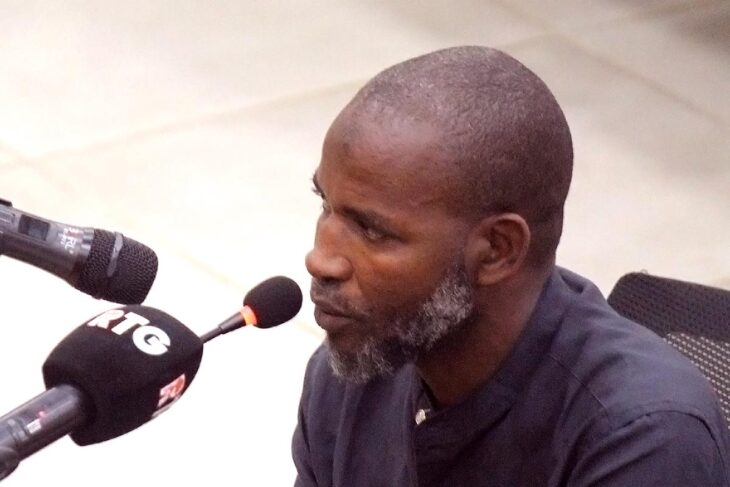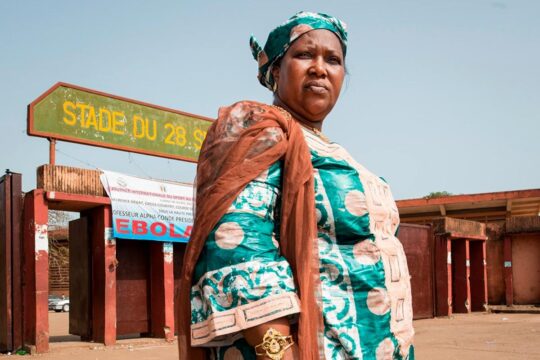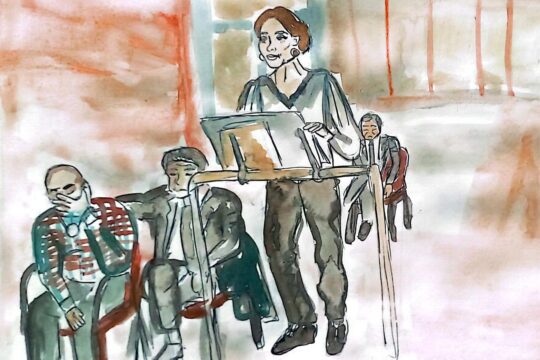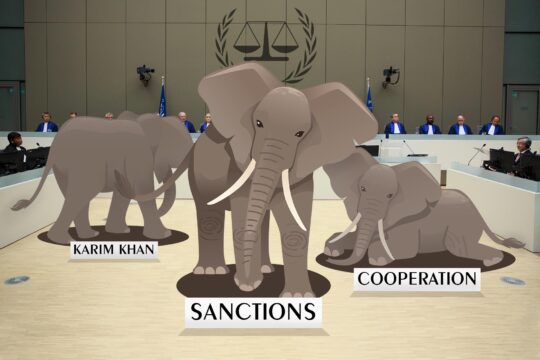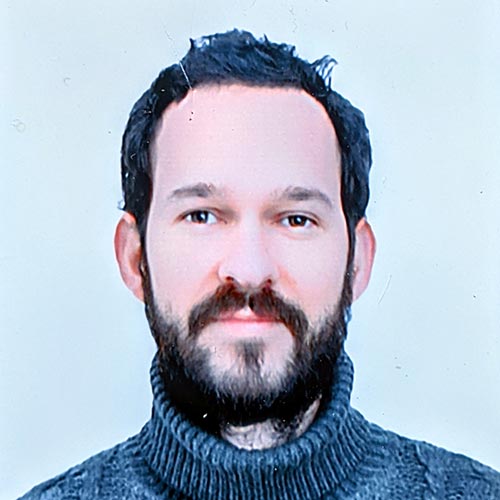A small record has just been broken at the Dixinn Criminal Court, where 11 defendants are on trial for their alleged role in the stadium massacre in Conakry, the capital of Guinea. Between May 2 and 3, six civil parties were called to the stand. On May 2, the testimony flowed so quickly that the hearing had to be suspended in the middle of the day because there was no one left to hear. The trial has entered a new phase, confirms Alpha Amadou DS Bah, lawyer for the civil parties. "It's speeding up. The defence has agreed that if a testimony does not directly concern an accused, his counsel should not intervene, or should do so quickly. So it saves us a lot of time." He says it also saves exposing the already fragile victims to a new trauma. Above all, "more people" will be able to take the stand, while the case is "exceptionally popular". The list of people who want to appear is growing day by day. Bah estimates that 100 civil parties "at most" still have to be heard.
In this mass trial, each victim holds part of the truth. The accounts complement each other, and sometimes contradict each other on certain points, but as the weeks go by, they paint an increasingly accurate picture of this bloodbath during which the security forces massacred more than 150 people and raped more than a hundred women at an opposition rally. The victims' testimonies overlap, particularly with regard to the various security forces seen at the stadium. Most of them saw red berets (this beret was worn by various soldiers at the time). "The military came in shooting," explained Mamoudou Conté on May 3. This leader of the Union of Republican Forces (UFR), an opposition party, speaks with wide gestures. He seems to be reliving his memories in court.
It is hard to believe that Tallatou Garanké Diallo, with his emaciated face and lanky figure, once belonged to the security detail of Cellou Dalein Diallo, leader of the Union of Democratic Forces of Guinea (UFDG), another opposition party. In his sixties, this tailor by profession describes the same scene as his predecessor on the stand: "We saw the red berets enter the stadium, they were shooting in all directions. All of us who were there to maintain order lay on top of the leaders. They fired until the whole crowd was dispersed, it was a stampede." He saw these same red berets attacking the opposition leaders. "They rushed at the leaders, shooting at them. They hit Mr. Bah Oury, Mr. Touré, Mr. Loucény Fall.”
Men who "looked like rebels”
Accompanying the red berets were men who "looked like rebels," Conté says. "They didn't look like soldiers." Diallo provides a fairly accurate sketch of these supposed auxiliaries: "They had red cloths on their heads, some wore a Chelsea soccer team shirt. They were armed with pieces of wood and knives."
"Around us, all kinds of crimes were being committed,” says Conté. “We were waiting for our turn. A woman was leaning against a wall near me, we were about ten metres apart. She was crying, she was exhausted." Then he saw a man approaching her. He had a red headband and cowrie shells on his forehead. "There was this boy..." says the witness, who pauses for a long time, lowers his head and bursts into tears. The first words he utters are inaudible. The hearing was suspended to allow him to recover his composure. A quarter of an hour later, he returned to finish his story. "The woman was in a state of total fatigue. This boy came, he had a knife. He slit the woman's throat. He then found a young man who was also worn out, almost in agony. He knocked him out, hit him on the head with his knife. He looked at the people, identified those already weakened and finished them off. He dealt them a final blow."
During the last two hearings, only one woman was called to the stand. Djenabou Bah recounted seeing men "in civilian clothes" at the stadium on several occasions. "They hit us with batons. The civilians also had knives. She says she saw Claude Pivi, the minister in charge of presidential security, but also Aboubacar Diakité, known as "Toumba", aide-de-camp of the head of state at the time. Toumba was also seen by Diallo. His testimony is one of the richest. He formally recognized Marcel Guilavogui, nephew of the head of the junta, and on the outskirts of the stadium Moussa Tiegboro Camara, then secretary of state in charge of the fight against drugs and organized crime. All of them are now in the defendants’ glass box.
A face that went around the world
On many occasions, this trial has shed new light on the history of Guinea. But the May 3 hearing will go down in history as the day an entire country finally put an identity on one of the most famous faces of the repression. He appears in a photo taken by an AFP photographer on September 28, 2009. On the outskirts of the Conakry stadium, this man is surrounded by green berets who hold him firmly. The terror can be seen on his face. Thirteen years later, Thierno Mamadou Diallo has not changed much, except for the few wrinkles that have appeared around his eyes and the white hairs that have colonized his beard. He speaks in Pular, and an interpreter translates his words into French.
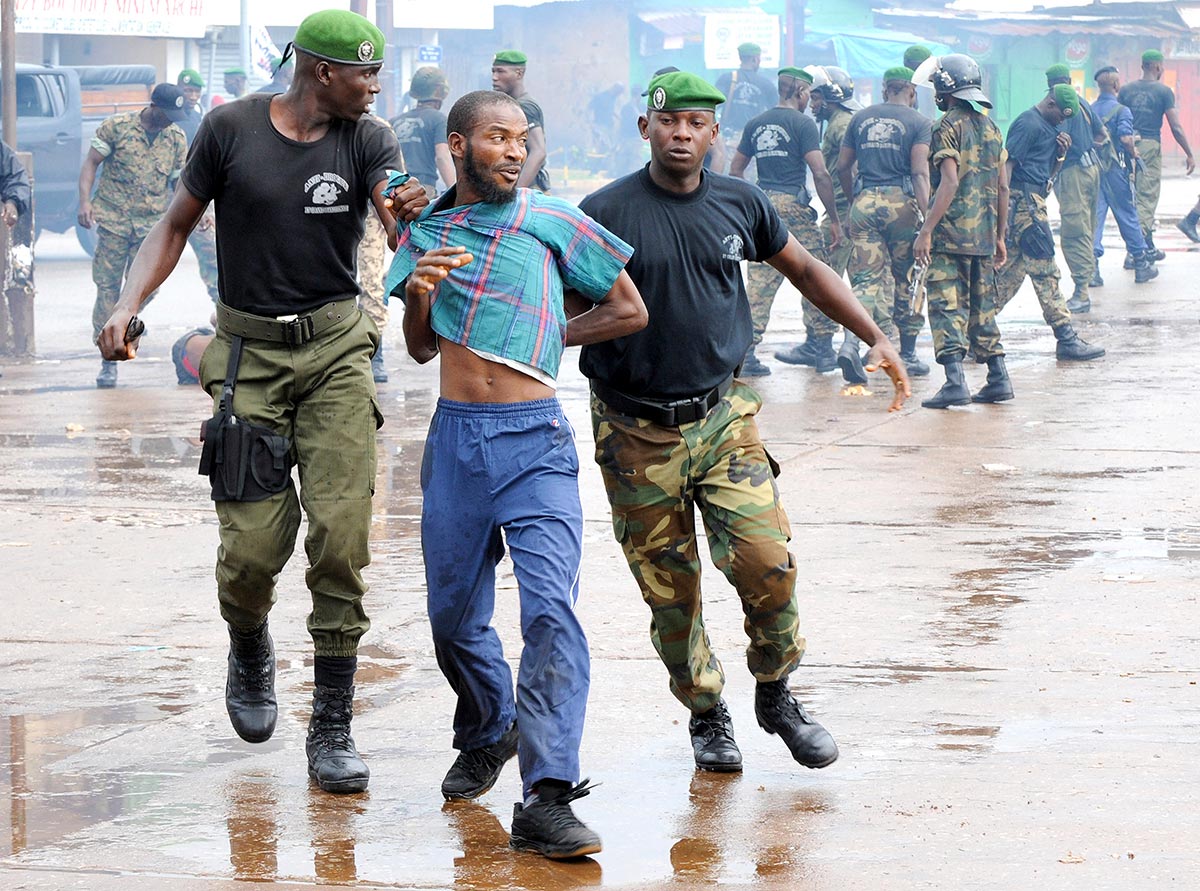
The morning of the massacre, he was on his way home, he remembers. Arrested by the security forces, he was thrown into a pickup truck and taken away with others in front of the stadium entrance. "We saw a lot of things, we heard people shouting and then there was shooting. At that moment, those who were with me tried to flee, I tried to escape too. I saw a Red Cross vehicle, I thought I could reach it. That's when they took me, this is the image that was published.”
In court, the interpreter holds up the picture. Published in the magazine Jeune Afrique in particular, but also taken up by other media (including Justice Info), the photo went around the world. "I hid for the next few days, until God gave me the chance to go to a neighbouring country. I was under threat, I no longer had the courage to stay here." Diallo had to go into exile in Senegal, where he had treatment for a knee injury resulting from mistreatment he endured during his arrest and detention. He never wanted to return to his country, but came to testify in person for the trial.
The trial will resume on May 8. After the victims, other witnesses will have to appear, followed by the confrontations between the victims and defendants, and finally the closing arguments. However, the trial could still get longer. Following denunciations by defendant Toumba, proceedings have been initiated against five more people. Their appeals against their indictments are currently being examined by the Supreme Court.


